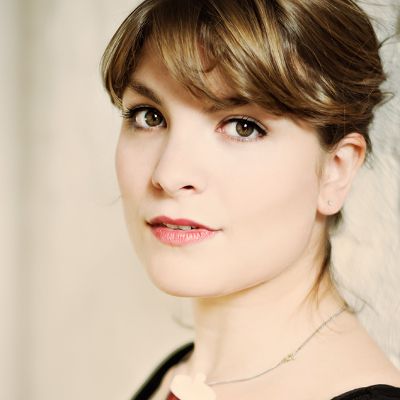The late morning light spilled through the top windows of the Amsterdam Concertgebouw as Skip Sempé and the Helsinki Baroque Orchestra took to the stage last Sunday. It was an ideal setting for this historically-informed Baroque ensemble, using one of the world’s most famous venues for large modern orchestras and stripping it to an intimate atmosphere. The orchestra itself comprised between fifteen and eighteen musicians, varying throughout its program – which ranged from Muffat to Telemann and finally dazzled us with J.S. Bach’s Cantata no. 202 with the vocal graces of the soprano Johannette Zomer. The most impressive aspect of this program was the group’s dedication to ensemble performance, during tutti sections but also soloistic moments featuring the stylings of Julien Martin on recorder. The combination of the use of period-style instruments, an intimate instrumentation and the raw talent of its musicians showcased not only the soloists but primarily the orchestra itself as the star of the day.
Under the leadership of Skip Sempé, we saw some of Helsinki’s best Baroque musicians in combination with a few familiar faces to the early music scene here in Holland, including members of Sempé’s own Capriccio Stravagante. It was apparent from the beginning with two selections from Georg Muffat’s Armonico tributo just how intricately connected these musicians were to one another and also to this specific repertoire. As the opening, almost overture-like Allemande wound down to a close, the strong bass section swept the group along to the following Passacaglia. Never a dull moment was felt as the violins struck syncopations with such fire and elegance en masse, creating delicate shifts of character as the opening motif returned again and again.
The orchestra’s range expanded even more evidently to us with Julien Martin’s rendition of a Telemann Suite for recorder, strings and basso continuo. Clearly experimenting with the French suite structure, Telemann used several movements whose titles tell the whole story: “Les plaisirs”, “Air à l’italien”, “Réjouissance”, etc. This particular suite offers delicious suppleness while at the same time heating the soul with pseudo-violent gestures demanded of the bow. We are swept along a path with captive attention, awaiting and enjoying the outcome of such surprises of subtlety. For example, the juxtaposition of the very French-influenced “Les plaisirs” offers the most vulnerable softness in the beginning with a deliberate avoidance of a clear downbeat. The ear wanders around the circulating melody, only finding solace in the sonority of the blending strings rather than a rhythmic certainty. Take then the “Air à l’italien”, which brings us strictly into a binary rhythm and thriving on the assurance of time and space. Telemann was truly playing with his musicians and audience by offering such contrasts in music, which enlighten the contrasts in cultures.
I must add as well that the subtle guidance of Skip Sempé was very refreshing. By staying still (not waving a finger) and allowing the string players to connect during movements with Martin excluding continuo, these particularly beautiful moments were made all the more apparent to us as audience members. Not only that, but it drew stark contrast to the roaring movements to come, drawing us closer and closer into the soundworld of the 18th century.
To hark the end of the morning’s concert was the entrance of the venerable soprano Johannette Zomer, widely regarded for her interpretations in the Baroque genre. Bach’s Cantata no. 202, also known as the “Wedding Cantata”, presented a perfect selection for Zomer showcasing five arias and four recitatives for her range all in one composition. Special note should be paid to the acrobatic leaps of Joshua Cheatham on the viola da gamba during his aria with the soprano. It was only twice when it felt as though the ensemble were truly pushing the limits with tempo. This occurred for example during the arias with the oboe (“Sich üben im Lieben”) and the violin (“Wenn die Frühlingslufte streichen”) when the briskness of the chosen tempi bordered on uncomfortable. The question remains whether we should as musicians take tempi which we can play even if it wouldn’t have been conceivable for the musicians at the time, given such limited rehearsal time (remembering Bach composed on average one cantata per week). For these simple ears the ambition on Sunday was no doubt impressive but perhaps not needed in such a context.
The music spoke for itself the other day in Amsterdam, as the truly communicative and inspiring Helsinki Baroque Orchestra showed its strength on the Concertgebouw stage. Such an ensemble is capable of creating both a chamber music intimacy and a fiery passion for modern-day listeners of Baroque music.


